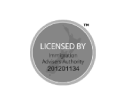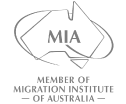Planning your move to Australia involves a mountain of tasks, and setting up your finances is a crucial first step. Opening a bank account before you arrive can significantly streamline the process, allowing you to transfer funds, manage expenses, and hit the ground running. This guide will walk you through four reliable options for opening an Australian bank account from overseas, highlighting the pros, cons, and key considerations for each.
Why Open an Australian Bank Account Before You Arrive?
Setting up a bank account beforehand offers immense advantages, especially for seasoned professionals like yourself. It allows you to:
- Transfer Funds Easily: Move your money securely and efficiently into your Australian account, ready for settling-in expenses.
- Establish Credit History: While it won’t instantly give you a credit score, having an active account demonstrates financial responsibility to potential landlords and service providers.
- Simplify Visa Requirements: Demonstrating access to funds is often a requirement for various visa applications, and a pre-opened account simplifies this process.
- Avoid Arrival Day Stress: Imagine landing in a new country without immediate access to your funds. A pre-existing account eliminates this anxiety, allowing you to focus on settling in.
Option 1: The “Big Four” Banks: Commonwealth, ANZ, NAB, and Westpac
Australia’s “Big Four” banks – Commonwealth Bank, ANZ, National Australia Bank (NAB), and Westpac – offer specialized services for newcomers, including the ability to open accounts remotely.
Pros:
- Established Reputation: These banks are household names with a long history of stability and reliability.
- Extensive Branch Network: Upon arrival, you’ll have easy access to branches and ATMs across the country.
- Comprehensive Services: They offer a wide range of financial products, including savings accounts, credit cards, mortgages, and investment options, once you establish residency.
- Dedicated Newcomer Support: Many have specialized teams to assist migrants with their banking needs.
Cons:
- Potentially Higher Fees: Compared to smaller banks or online-only options, their fees might be slightly higher.
- Bureaucracy: Dealing with larger institutions can sometimes involve more paperwork and a less personalized experience.
- Stringent Requirements: They may require more documentation upfront to verify your identity and overseas address.
How to Open an Account:
- Visit their website: Navigate to the “New to Australia” or “Migrant Banking” section of their website.
- Complete the online application: Fill out the application form, providing all required information.
- Provide identification: Submit scanned copies of your passport and other identity documents as requested.
- Await approval: Once approved, you’ll receive your account details and instructions on how to deposit funds.
Option 2: Online-Only Banks: Up Bank, ING, and 86 400
For tech-savvy individuals who prefer managing their finances digitally, online-only banks like Up Bank, ING, and 86 400 offer a compelling alternative.
Pros:
- Lower Fees: Online banks typically have lower fees than traditional banks, often waiving monthly account fees and offering competitive exchange rates.
- Convenience: You can manage your account entirely online or through their mobile app, 24/7.
- User-Friendly Platforms: Their apps are intuitive and easy to navigate, even for those less familiar with digital banking.
- Competitive Interest Rates: They may offer higher interest rates on savings accounts to attract customers.
Cons:
- No Physical Branches: If you prefer face-to-face banking, this isn’t the option for you. Although ING has a partnership with Australia Post for deposits.
- Limited Services: They may not offer the full range of financial products and services as traditional banks.
- Verification Challenges: Verifying your identity from overseas can sometimes be more challenging with online-only banks.
How to Open an Account:
- Download their app: Download the bank’s mobile app from the App Store or Google Play.
- Complete the online application: Follow the on-screen instructions to fill out the application.
- Verify your identity: Use their online verification process, which may involve taking a photo of your passport and a selfie.
- Deposit funds: Once approved, you can deposit funds into your new account.
Option 3: Multi-Currency Accounts: Wise and Revolut
Wise (formerly TransferWise) and Revolut offer multi-currency accounts that can be particularly useful for managing international funds and transactions.
Pros:
- Excellent Exchange Rates: They generally offer very competitive exchange rates, often better than traditional banks.
- Low Fees: Their fees are transparent and typically lower than traditional banks for international transfers.
- Multi-Currency Functionality: You can hold and manage funds in multiple currencies, making it easy to transfer money to and from Australia.
- Convenient for Travel: Their debit cards can be used worldwide, with no foreign transaction fees in many cases.
Cons:
- Not a Full-Fledged Bank Account: These accounts are primarily designed for currency exchange and international transfers, not for holding large sums of money long-term.
- Limited Services: They may not offer the same range of services as a traditional bank account, such as loans or mortgages.
- Verification Requirements: They have strict verification requirements to comply with anti-money laundering regulations.
How to Open an Account:
- Visit their website or download their app: Go to the Wise or Revolut website or download their mobile app.
- Create an account: Sign up for an account, providing your personal information.
- Verify your identity: Follow their verification process, which may involve submitting copies of your passport and proof of address.
- Add funds: Once verified, you can add funds to your account in your desired currency.
Option 4: Utilizing a Migration or Relocation Service
Some migration agents or relocation services offer assistance with opening bank accounts as part of their broader suite of services. Companies like Newland Chase and Santa Fe Relocation can often facilitate this process.
Pros:
- Convenience: Handles the entire process on your behalf, saving you time and effort.
- Expert Guidance: They can advise you on the best banking option based on your specific needs and circumstances.
- Reduced Stress: Eliminates the hassle of dealing with paperwork and navigating the complexities of the Australian banking system.
- Bundled Services: Often included as part of a larger relocation package, providing a comprehensive solution.
Cons:
- Higher Cost: This is generally the most expensive option, as you’re paying for the convenience and expertise of a third-party service.
- Less Control: You’ll have less direct control over the account opening process.
- Potential Conflicts of Interest: Ensure the agent is acting in your best interest and not pushing a particular bank for their own benefit.
How to Open an Account:
- Contact a reputable migration or relocation service: Research and select a reputable company with experience assisting migrants with banking.
- Discuss your needs: Explain your banking requirements and financial goals to the service provider.
- Provide documentation: Provide the necessary documents, such as your passport and visa details.
- Approve the application: Review and approve the bank account application prepared on your behalf.
Key Considerations Before You Choose:
- Your Visa Type: Some banks may have specific requirements based on your visa type.
- Your Financial Needs: Consider your long-term financial goals, such as buying a property or investing in the stock market.
- Fees and Charges: Compare the fees and charges of different banks, including account fees, transaction fees, and international transfer fees.
- Branch Access: If you prefer face-to-face banking, choose a bank with an extensive branch network in your chosen city.
- Customer Service: Research the customer service reputation of each bank, reading reviews and testimonials.
Conclusion
Opening an Australian bank account from overseas is a smart move that can significantly ease your transition. Whether you opt for a traditional “Big Four” bank, a tech-savvy online bank, a multi-currency account like Wise or Revolut, or the convenience of a relocation service, carefully weigh the pros and cons of each option to choose the best fit for your needs. By taking the time to plan ahead, you can ensure a smooth and stress-free start to your new life in Australia.










